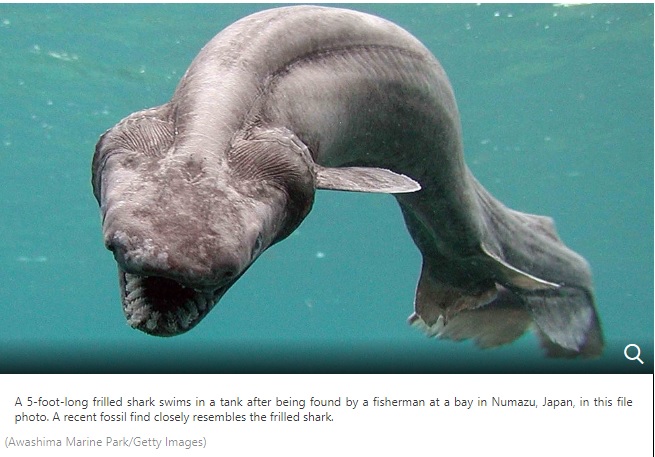By Jan Wesner Childs
At a Glance
- Because shark fossils are made of cartilage, they are rarely preserved.
- The creature appears similar to the modern-day frilled shark.
- The only previous evidence of its existence were some teeth and fin spines.
Researchers in Morocco have found a rare, nearly whole shark skeleton dating back some 370 million years.
Because shark skeletons are made of cartilage, it’s rare to find them in fossil digs. A team of paleontologists made the discovery in the Anti-Atlas Mountains, and detailed their finds in a recent paper published by Proceedings of the Royal Society.
The skeleton included preserved cartilage and muscle and is the oldest of its kind known to be found, according to the journal Nature. It belongs to the species Phoebodus saidselachus. The researchers also found several skulls from the same shark.
(MORE: Where’s the Best Place to Survive a Global Pandemic?)
The fossils were found in a layer of sediment estimated to be between 360 and 370 million years old, National Geographic reported, in an area that would have been a shallow sea basin at that time. The sea basin likely had limited water circulation and low levels of oxygen, which left a perfect environment for the skeleton to be preserved.
By using CT scans to further study the fossils, the researchers found that they closely resemble the modern-day frilled shark, with an eel-like body. The frilled shark lives in very deep ocean water and is rarely seen.
In particular, the two sharks have very similar teeth, which indicates both had similar feeding habits.
“Many modern sharks have serrated teeth that allow them to cut up their prey before ingesting the pieces,” said study co-author Christian Klug of the University of Zurich, according to National Geographic.
By contrast, the cone-shaped inward pointing teeth of both Phoebodus and the frilled shark are best suited for swallowing their prey whole.
The only previous evidence of the ancient shark’s existence were some teeth and fin spines. Discoveries such as this one, and the technology used to investigate them further, are advancing science in general.
“The quantity of data that is emerging from studies such as this is staggering,” John Maisey, a paleontologist with the American Museum of Natural History who was not part of the research team, told National Geographic. “We are experiencing a renaissance of anatomy.”
The Weather Company’s primary journalistic mission is to report on breaking weather news, the environment and the importance of science to our lives. This story does not necessarily represent the position of our parent company, IBM.







